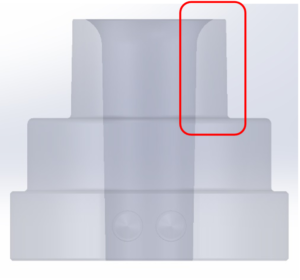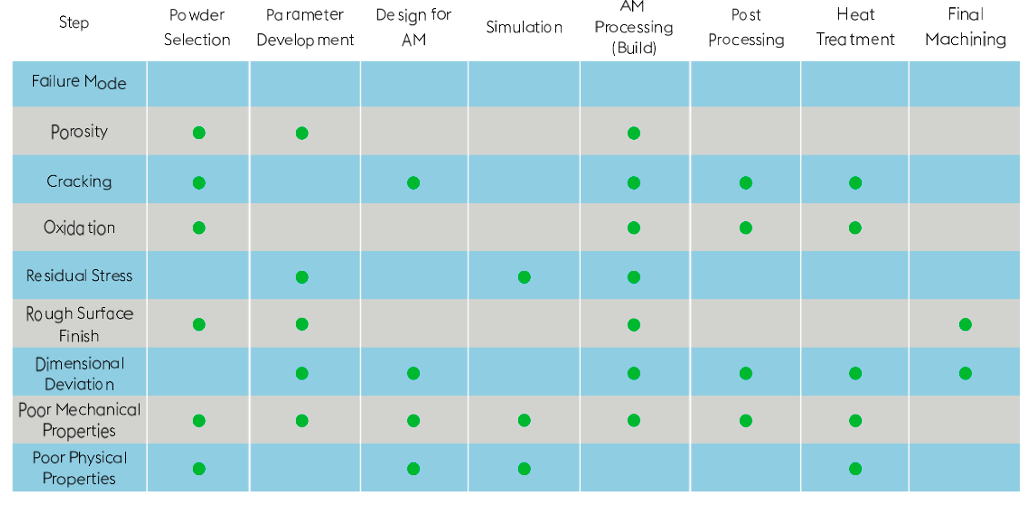AMS Speaker Spotlight: Why the ‘Concept to Commercialization’ Approach Is Key for Successful 3D Printing Implementation
Additive manufacturing (AM) empowers innovative design with unprecedented benefits. With this rapidly advancing technology, it is crucial to integrate process disciplines and expertise to ensure an optimized product that achieves the desired quality and functionality while avoiding costly mistakes. In order to fully capitalize on AM’s potential, companies must choose a provider that can link the full AM production chain together under one roof.
AM can offer tremendous opportunities for innovative design and productivity benefits. However, new technologies and innovations can also pose risks to those attempting to implement them. This article explores the major benefits and the inherent risks involved with this evolving value chain and presents some good practices to help mitigate those risks.
Interest in AM has grown swiftly as applications have progressed from rapid prototyping to the production of end- use products. AM equipment can now use metals, polymers, composites, or other powders to “print” a range of functional components, layer by layer, including complex structures that cannot be manufactured by other means. AM technology can be used to build complete parts, add features, or make repairs. 1This article will focus on Laser Powder Bed Fusion (LPBF) technology for metal, in which layers of metal powder typically measuring from 15 to 80 microns are melted into the desired shape. After each layer is fused into the precise design, a fresh layer of powder is added, and the next cross section of design data is used to construct the item from the bottom up. This process can build custom tools or parts from a range of metals such as aluminum, high-strength steel, titanium, nickel-base alloy, and cobalt chrome. In application, LPBF serves a variety of markets such as tooling, aerospace, oil and gas, automotive, and medical industries.
Benefits of additive manufacturing
By enabling manufacture for design, not design for manufacturing, AM technology inverts the usual approach to design, which has historically been constrained by manufacturing limitations. By contrast, AM’s build process allows a greater freedom of design for complex geometries.
Additive manufacturing enables:
- Building of complex geometries, including internal features
- Combining multiple parts into one
- Utilizing lightweight lattice designs
- Generating less waste
- Reducing inventory – satisfy low-inventory business models
- Faster time to market and rapid prototyping
- Potential for smart components with integrated sensors

Engine hood hinge AM redesign: the bionic structure achieved a 50% weight reduction compared to conventional fabrication and enabled integration of a predetermined break point for additional passenger safety.
AM Process Chain
There are four broad interrelated stages to additive manufacturing: Design and Engineering, AM Production Technology and Powder Selection, AM Production, and Finish Manufacturing. Each stage comprises several process ele-ments requiring specialized expertise:
- Design and Engineering begins with understanding and design intent of the component and operating conditions. The design is analyzed and optimized utilizing simulations
- AM Technology and Powder Selection involves selecting both the most suitable AM technology for the given component as well as the best powder material for the end-user application
- AM Processing (or Build) and Production includes setting the parameters for the AM process, building the item using AM equipment, post-processing to remove supporting structures, and heat treatment and hot isostatic pressing (HIPping) if required to ensure desired material properties
- Finish Manufacturing including final machining, polishing, coatings and final inspection as required to achieve final application readiness
- Die casting insert (sprue) with narrow section impossible to cover by traditional cooling
- conformal cooling solution (center) with freedom of design afforded by employing AM techniques
- section view replica demonstration
Risk of multiple hand-offs
This highly integrated chain demands a superior level of coordination and open dialogue, as misalignment amongst these disciplines can undermine the product’s final quality and integrity.
For starters, powders can oxidize if not adequately sealed and protected while in storage. In addition, sub-optimal process parameters can result in porosity and cracks in the AM component. Moreover, fine-tuned procedure and precise control in the heat treatment, HIPping, and final machining processes are crucial to the quality and integrity of the AM product.
Managing multiple independent sub-contractors demands in-depth technical expertise and a large portion of bandwidth from the project manager. This tends to over stretch project resources and makes troubleshooting exceedingly difficult.
The ideal scenario: one source for the AM value-chain
Given the interdependent and highly specialized nature of AM, manufacturers can best exploit this technology by taking advantage of partners that offer a one-stop-shop. By integrating the full AM process chain through one source, such providers facilitate communication among the full suite of experts, reduce delays associated with coordination among different companies, and avoid costly mistakes that can result from poor planning or miscommunications amongst the suppliers.
voestalpine Additive Manufacturing Centers North America offers one example of a fully integrated approach to AM. In addition to producing specialized metal powders (BÖHLER, UDDEHOLM), voestalpine brings together in-house modeling and simulation expertise with best-in-class AM technologies. Through a single point of contact, each AM project proceeds seamlessly through powder selection, powder customization as necessary, application design and simulation, additive build, heat treatment, post-processing, polishing, and coating.
Furthermore, because voestalpine caters to high-performance applications such as plastics molding and die cast tooling, oil and gas, aerospace, and automotive sectors, the company’s long-established record with relevant industries allow them to combine a thorough understanding of the market’s needs with a forward-thinking embrace of in- novation. The result is a singular AM solution that simplifies the supply chain, reduces risk, and ultimately provides better solutions to customers.
Conclusion: Optimization utilizing AM
No longer solely a prototyping technology, AM is now being used for serial production components in addition to tooling for the most demanding applications. Components that would not have been possible just a few years ago can now be made to high standards using a wide range of metal powders. AM promises to enhance production by optimizing design for lighter-weight, more effective parts and tools and reducing waste, tooling, and inventory. For producers looking to leverage these advantages, the greatest value can be gained by working with a full-service AM provider with extensive knowledge of the customer’s applications and mastery of the key AM disciplines. This integrated approach is vital to ensuring AM products are not only superior in design but also reliable, robust, and durable.
For more information, please contact:
Sami Arsan P.Eng,PMP,CAM-F
Regional Vice President
Additive and Advanced Manufacturing Technologies
North America
voestalpine Additive Manufacturing Centre Ltd.
Subscribe to Our Email Newsletter
Stay up-to-date on all the latest news from the 3D printing industry and receive information and offers from third party vendors.
Print Services
Upload your 3D Models and get them printed quickly and efficiently.
You May Also Like
The Market and Industry Potential of Multi-Material 3D and 4D Printing in Additive Electronics
Additive manufacturing leverages computer-based software to create components for products by depositing either dielectric or conductive materials, layer by layer, into different geometric shapes. Since its birth in the 1980s,...
3DPOD 262: Bio-inspired Design for AM with Dhruv Bhate, Arizona State University
Dhruv Bhate is an associate professor at Arizona State University. There, he looks at structures, materials, and design. Previously, he worked at PADT as well as in the semiconductor and...
3DPOD 261: Tooling and Cooling for AM with Jason Murphy, NXC MFG
Jason Murphy´s NXC MFG (Next Chapter Manufacturing) is not a generalist service; instead, the company specializes in making tooling. Using LPBF and binder jet, the company produces some of the...
3DPOD 260: John Hart on VulcanForms, MIT, Desktop Metal and More
John Hart is a Professor at MIT; he´s also the director of the Laboratory for Manufacturing and Productivity as well as the director of the Center for Advanced Production Technologies....




































